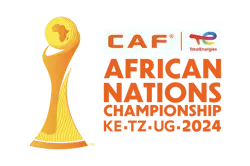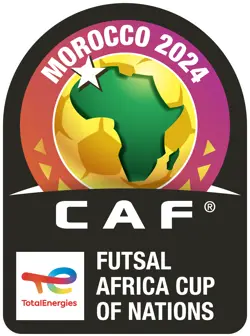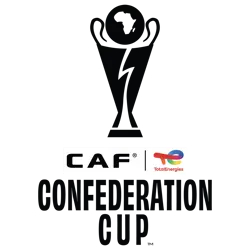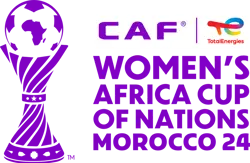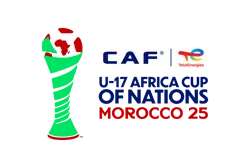CAF Women’s Champions League: “African teams are now stronger, faster and more resilient” Shilene Booysen
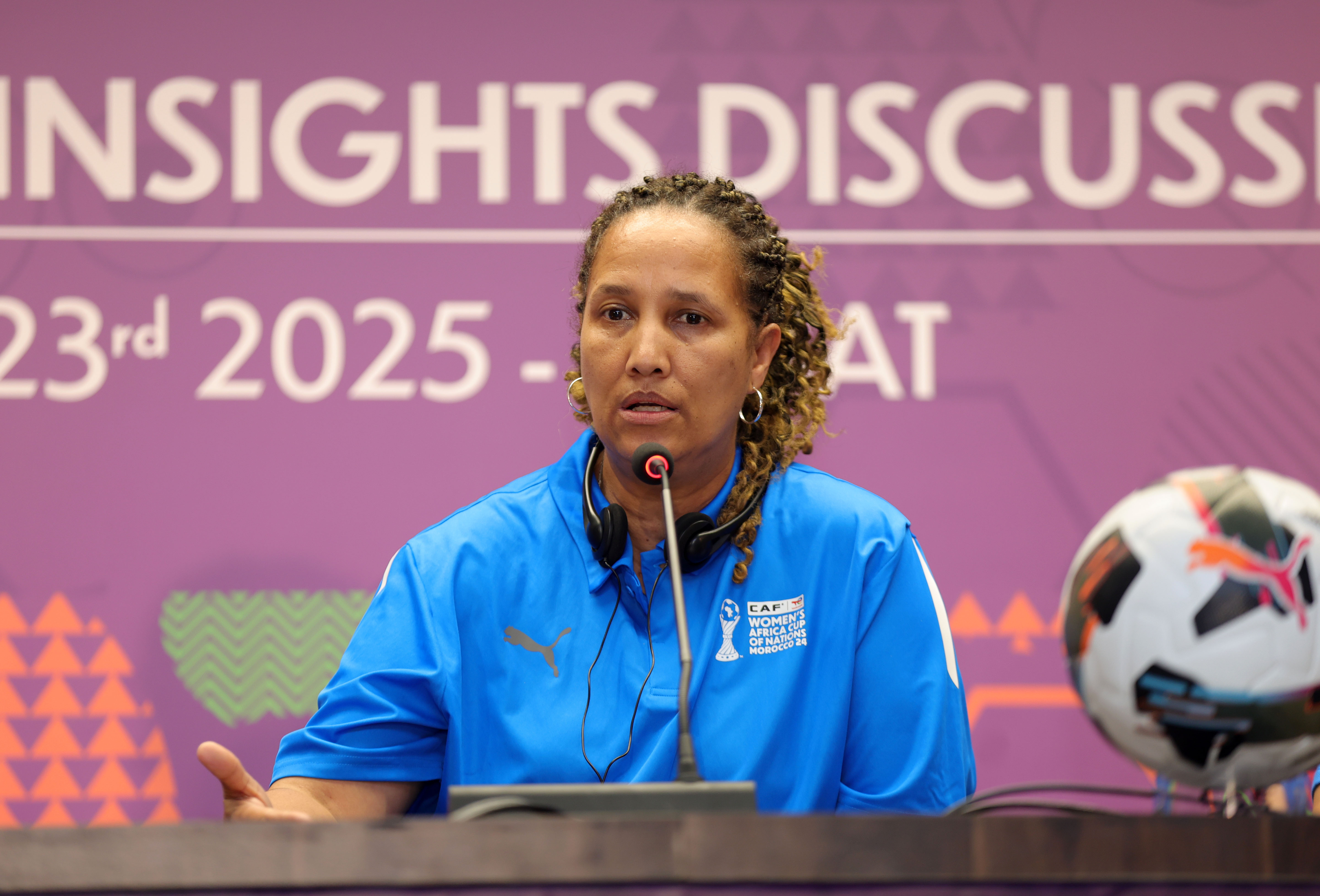
The ongoing CAF Women’s Champions League in Egypt has once again highlighted the rapid evolution of women’s football across the continent, a transformation closely observed by CAF Technical Study Group member Shilene Booysen.
Speaking to CAFOnline, Booysen emphasised that the tournament has reached a new competitive and technical level, with teams showing greater confidence, precision, and sophistication in their play.
Booysen also points to the remarkable physical and tactical growth shaping the identity of African women’s football. Clubs are now fielding faster, fitter, and more resilient athletes who can sustain higher-intensity football while executing modern tactical behaviours such as coordinated pressing, inverted wingers, and fluid transitional play.
This evolution, she says, is evidence of stronger coaching, better preparation, and growing professionalism across the continent.
How would you assess the overall technical quality of the teams in this year’s CAF Women’s Champions League compared to previous editions?
The overall technical quality in this year’s CAF Women’s Champions League has noticeably increased, and you can feel that progression across all phases of the game.
If compared to previous editions, teams are demonstrating a higher standard of ball control, combination play, and decision-making under pressure. There is greater comfort in building from the back, more purposeful use of width, and improved technical execution in tight spaces which are all signs of a maturing competition.
We’re also seeing: better first-touch quality, allowing teams to play at higher tempo. More consistent passing ranges, from short combinations to longer switches of play. Improved pressing resistance, with players scanning earlier and adjusting body shape before receiving.
More refined attacking patterns, showing that teams are not just relying on individual talent but on rehearsed structures. What’s encouraging is that this improvement is not limited to the traditionally strong clubs because even the debutant teams are showing technical confidence and ambition.
Overall, the technical profile of the tournament has evolved significantly. The game is faster, more precise, and more demanding and that is exactly what you want to see in a continental competition aimed at elevating women’s football in Africa.
Which tactical trends have emerged most strongly during this tournament, and what do they reveal about the development of women’s football across Africa?
For me, several clear tactical trends have emerged in this year’s CAF Women’s Champions League, and together they paint a very encouraging picture of how the women’s game is evolving across Africa.
More Structured Build-Up Play with teams showing greater confidence and organisation in the first phase. This reflects improved coaching and a shift toward possession-based principles rather than relying solely on direct play.
High and Coordinated Pressing showing that pressing has become far more intentional. Major trends include: Higher defensive lines, trigger-based pressing cues and better synchronisation across the front units and with many of the team engaging in aggressive counter-pressing after loss of possession
One of the trends that have really stood out is the Widespread Use of Inverted Wingers and Overlapping Full-Backs. The combination of inside wingers and high full-backs has been a major feature. This has allowed teams to create 2v1s wide, attack the half-spaces and stretch defences both vertically and horizontally
Another one that I have seen in many of the teams is the Emphasis on Transitional Dominance. Transition phases have stood out and team have shown more awareness around immediate forward runs after regain and compact recovery structures after loss.
These trends have revealed that women’s football in Africa is becoming faster, smarter, more structured, and more aligned with global tactical evolution.
This tournament has proven that African women’s football is no longer only about physicality — it is now rich in tactical ideas, game intelligence, and modern football behaviours.
What improvements have you observed in player fitness, conditioning, and athleticism relative to the tournament’s early years?
The physical profile of the tournament has evolved significantly, and it’s one of the clearest indicators of development across the continent.
It is shown by the higher match intensity. Teams are now able to sustain higher tempos for longer periods, with fewer drop-offs in energy. We’re seeing much faster transitions and also more aggressive pressing phases with also teams being able to sustain longer periods of continuous high-intensity play. This shows also improved physical preparation and better conditioning programmes at club level and that is around the continent.
The pace of the tournament has increased noticeably. Full-backs, wingers, and even centre-backs have become quicker over short distances, more agile in defensive adjustments and better at covering space in transitions.
African teams are now stronger, faster, fitter, and more resilient than in the early years. This growth is closing the gap with global standards and enabling teams to express more complex tactical ideas because their physical base can support it. It’s a major sign that the women’s game in Africa is professionalising and progressing at real pace, and that is what competitions like the CAF women’s champions league has achieved.
How would you evaluate the level of coaching in the competition, and what technical areas require further investment or training for coaches?
The overall level of coaching in this year’s CAF Women’s Champions League has clearly improved, and that is one of the most encouraging aspects of the tournament.You can see coaches who are more prepared, more tactically flexible, and more confident in applying structured game models. Teams now arrive with clear identities in possession, organised defensive blocks, and well-rehearsed transition behaviours, all signs of stronger coaching influence.
What Coaches Are Doing Well:
Better tactical organisation:Coaches are implementing clearer positional structures, structured build-up patterns, and coordinated pressing strategies.
Improved game management:Substitutions, in-game adjustments, and adaptation to opponent strengths are more deliberate and timely.
Attention to detail:Set-piece work, unit distances, and pressing triggers are areas where coaching standards have visibly risen.
Higher professionalism:Training routines, scouting preparation, and opposition analysis are more consistent across clubs than in earlier editions.
Areas Where Further Investment and Development Are Needed
1. Advanced Tactical Periodisation: Many coaches still need support in planning long-term training cycles that align physical, technical, and tactical work. This will help improve consistency and reduce late-game drop-offs especially in the latter stages of the competition.
2. Decision-Making Under Pressure: Players often struggle with high-tempo decision-making, which stems from training design. In my opinion, coaches need more training in:
Designing game-realistic scenarios, Directional rondos, pressure-based possession tasks
to accelerate decision speed and intelligence.
3. In-Depth Opposition Analysis: There is not a world I live in where I will not ask for more of this, because while progress has been made, analytical preparation varies widely between clubs.
Coaches would benefit from:
· video analysis training
· tools for opponent scouting
· learning how to translate data into tactical plans
What differences do you notice between clubs with established women’s football structures and those still developing their programs?
There are very distinct differences between clubs with long-standing women’s football structures and those still in the early stages of building their programmes and this tournament makes those contrasts visible. 1. Level of Tactical Identity and Game Models - Established clubs tend to have:
· Clear playing philosophies
· More structured build-up patterns
· Defined roles for each position
· Better cohesion between units
· Developing clubs often rely more on individual ability and natural athleticism, with less clarity in collective behaviours.
This reflects the maturity of their coaching environments and the time invested in teaching a consistent style of play.
How effectively are teams applying modern playing principles such as high pressing, positional play, or transitional strategies?
Teams are embracing modern football principles more effectively than ever before.Pressing is more coordinated, positional play more deliberate, and transitions more decisive. The application is not perfect, and some teams remain in the learning phase, but the evolution is unmistakable.
This tournament demonstrates that African women’s football is aligning strongly with global tactical trends, a major step forward for the game on the continent.
What technical or tactical gaps still appear most frequently at this level?
While the level has improved significantly, there are still a few technical and tactical gaps that appear consistently across teams in the CAF Women’s Champions League.
Consistency of Decision-Making Under Pressure. Many teams still struggle with rushed passes when pressed, poor choices in the final third. Limited scanning before receiving and difficulty controlling tempo in key moments. And this again highlight a need for more game-realistic training environments.
Final-Third Efficiency. While build-up play has improved, teams still lack: clinical finishing, the quality in the last pass, coordinated movements inside the box and composure around goal.
Set-Piece Execution and Organisation. There is progress, but gaps remain in: marking discipline (especially zonal–man hybrids), timing of attacking runs, defensive concentration on second phases and delivery quality. Set pieces still decide many games, so improvements here can shift results.
The most frequent gaps are in decision-making, defensive transitions, final-third efficiency, and the finer details of positional play and pressing structures. These gaps are normal at this stage of development, and the good news is that they are coachable, with improved training methodologies, stronger youth pathways, and more exposure to high-level competition, these areas will continue to close quickly.
How would you rate the goalkeeping standards, including shot-stopping, distribution, and command of the penalty area?
Goalkeeping standards are improving year by year, especially in shot-stopping and confidence on the ball. But for us to reach elite global levels, more investment is needed in:
Command of the Penalty Area - This is where the biggest gap still exists.
Across the tournament, we’ve seen: uncertainty when dealing with crosses, inconsistent timing when coming off the line, hesitation in claiming aerial balls and less vocal organisation of the back line. Other areas that need improvement is:
· Aerial command
· Decision-making under pressure
· Distribution quality
· Communication and organisation
The positive news is that the trajectory is upward, and this tournament has showcased several goalkeepers who are emerging as top prospects on the continent.

